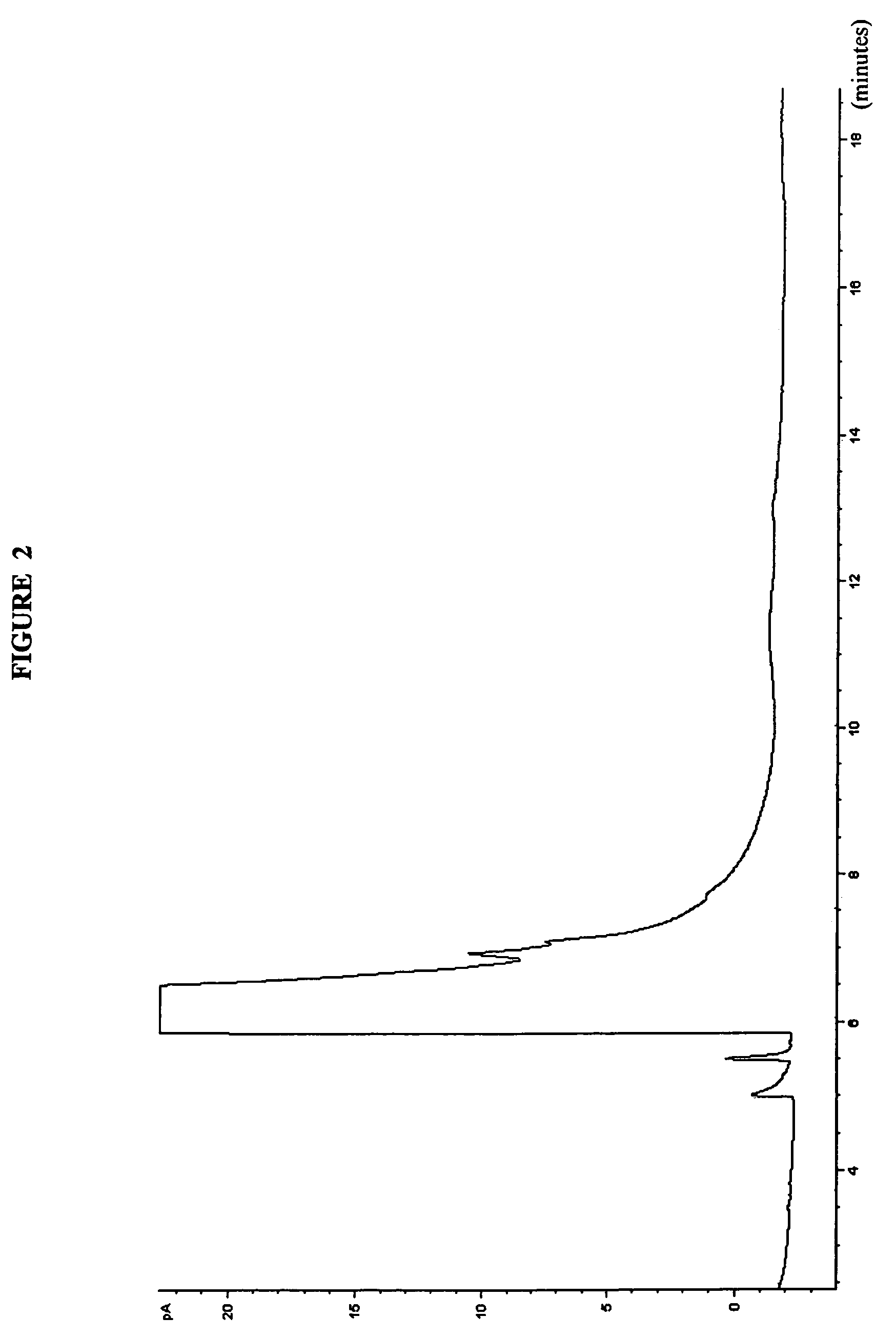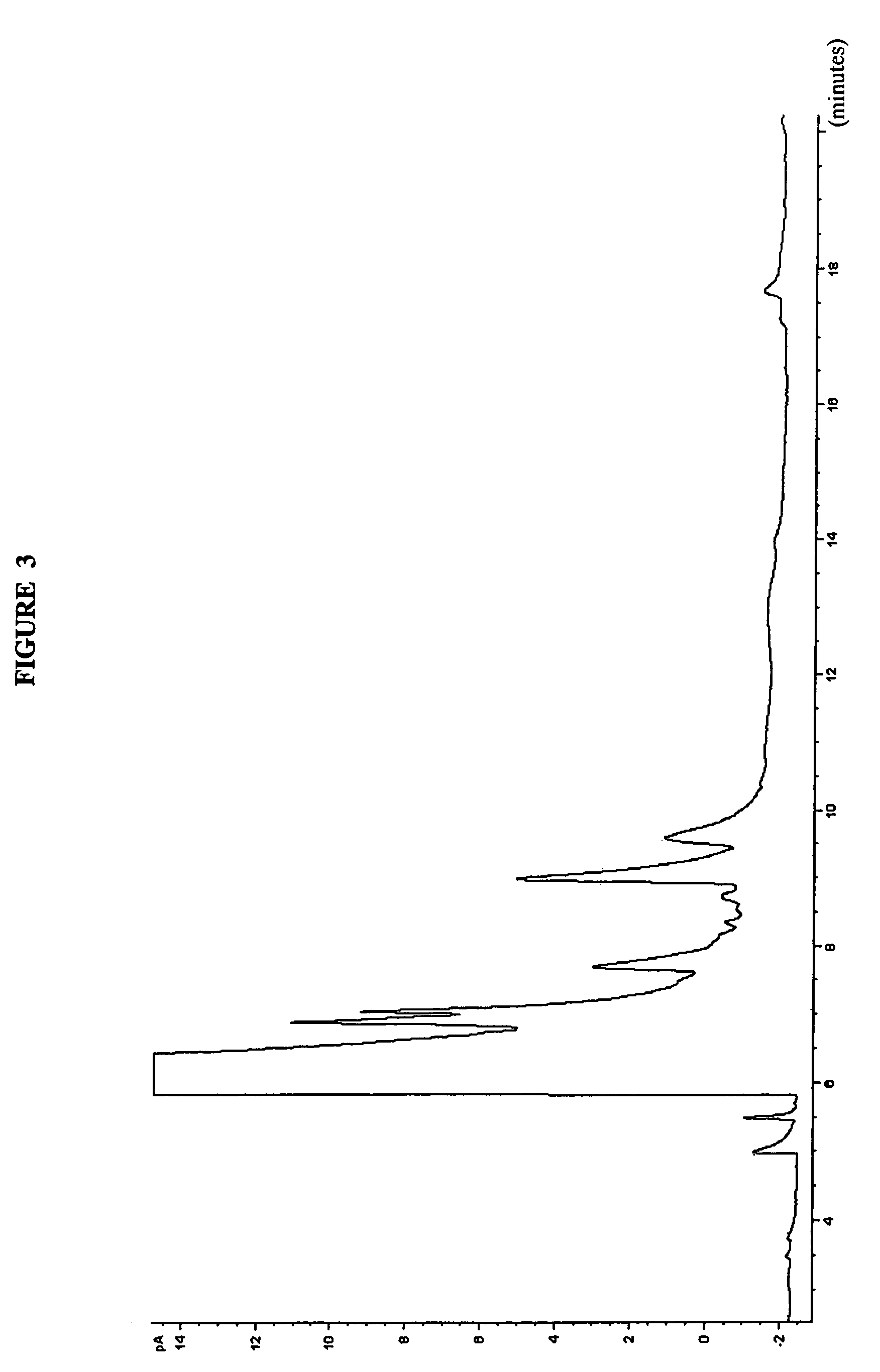Method for reducing the freezing point of aminated aviation gasoline by the use of tertiaryamylphenylamine
a technology of tertiary amylphenylamine and aviation gasoline, which is applied in the field of unleaded aviation gasoline, can solve the problems of insufficient to meet the needs of 98 mon high octane avgas, easy fouling and deposit formation
- Summary
- Abstract
- Description
- Claims
- Application Information
AI Technical Summary
Problems solved by technology
Method used
Image
Examples
example 1
[0042]This example illustrates the effect on freezing point of the addition of different alkylphenylamines to alkylate aviation fuel.
[0043]
Blends in weight %FreezeAlkylateAlkylphenylamineToluenePoint in ° C.89114-TBPA0−5288114-TBPA1−5682114-TBPA6pass* 9004-TBPA0pass**104-IPPA89.55.54-TBPA0pass**54-IPPA9554-TAPA080204-TAPA0*froze upon removal from cold bath at −59° C. (supercooled)**a few crystals formed on top of the sample upon warming Pass = −58° C.4-TBPA 4-tertiarybutylphenylamine4-IPPA 4-isopropylphenylamine4-TAPA 4-tert-amylphenylamine (material of FIG. 3)
example 2
[0044]This example illustrates the effect on fouling and deposit formation of the addition of 4-t-butyl-, 4-isopropyl-, and 4-tert-amyl-phenylamines to alkylate fuels. The test was run in accordance with the procedure reported in U.S. Pat. No. 5,492,005. In the test n-heptane insolubles and toluene insolubles were measured and the fouling potential determined. In the test a metal nub is cycled between 150° C. and 300° C. in 9 minute cycles. About 40 ml of fuel is dripped on the nub in an air atmosphere. The nub is weighed before and after feed is dripped on it to five decimal places (0.00001 g). It is then washed with n-heptane and weighed and with toluene and weighed to determine the n-heptane and toluene insolubles.
[0045]
n-HeptaneTolueneFeed to Deposit testinsolubleinsolubleFouling(all as wt %)deposit (mg)deposit (mg)Potential*alkylate00Non-foulingalkylate + 11%0.080.08Mildly fouling4-TBPAalkylate + 11%0.010.02Non-fouling4-TBPA + 11% toluenealkylate + 11% 4-IPPA0.140.14Low-Moderat...
example 3
[0046]This example illustrates the effect on freezing point of the addition of 4-tertamylphenylamine (99.29% purity, FIG. 3) and 4-t-butylphenylamine in different molar ratios to alkylate aviation fuel, at different cooling temperatures. A total of between 11 wt % to about 12 wt % amine was added to the alkylate then cooled either at −58° C. or −70° C. then warmed to room temperature.
[0047]
Cooled at −58° C.% of AminesConcentrationLowestOn Warming(molar)(wt %)TemperatureCrystalsCrystals4-TAPA4-TBPA4-TAPA4-TBPAReached (° C.)Appeared, ° C.Disappeared, ° C.505065.5−58n / an / a257538.2−58−54.5−25336747.3−58−56.5−24.59911.110−41.5−41.5−20.50100011−45−45−19.5673383.6−58n / an / a752592.8−58n / an / a901010.81.1−58n / an / a
[0048]
Cooled at −70° C.% of AminesConcentrationLowestOn Warming(molar)(wt %)TemperatureT CrystalsT Crystals4-TAPA4-TBPA4-TAPA4-TBPAReached (° C.)Appeared, ° C.Disappeared, ° C.505065.5−67.5−67.5−28257538.2−69−69−24.5336747.3−70−2.5−2.59911.110−62.5−62.5−21.50100011−58−58−16.55950.610.4...
PUM
| Property | Measurement | Unit |
|---|---|---|
| freezing point | aaaaa | aaaaa |
| wt % | aaaaa | aaaaa |
| mol % | aaaaa | aaaaa |
Abstract
Description
Claims
Application Information
 Login to View More
Login to View More - R&D
- Intellectual Property
- Life Sciences
- Materials
- Tech Scout
- Unparalleled Data Quality
- Higher Quality Content
- 60% Fewer Hallucinations
Browse by: Latest US Patents, China's latest patents, Technical Efficacy Thesaurus, Application Domain, Technology Topic, Popular Technical Reports.
© 2025 PatSnap. All rights reserved.Legal|Privacy policy|Modern Slavery Act Transparency Statement|Sitemap|About US| Contact US: help@patsnap.com



